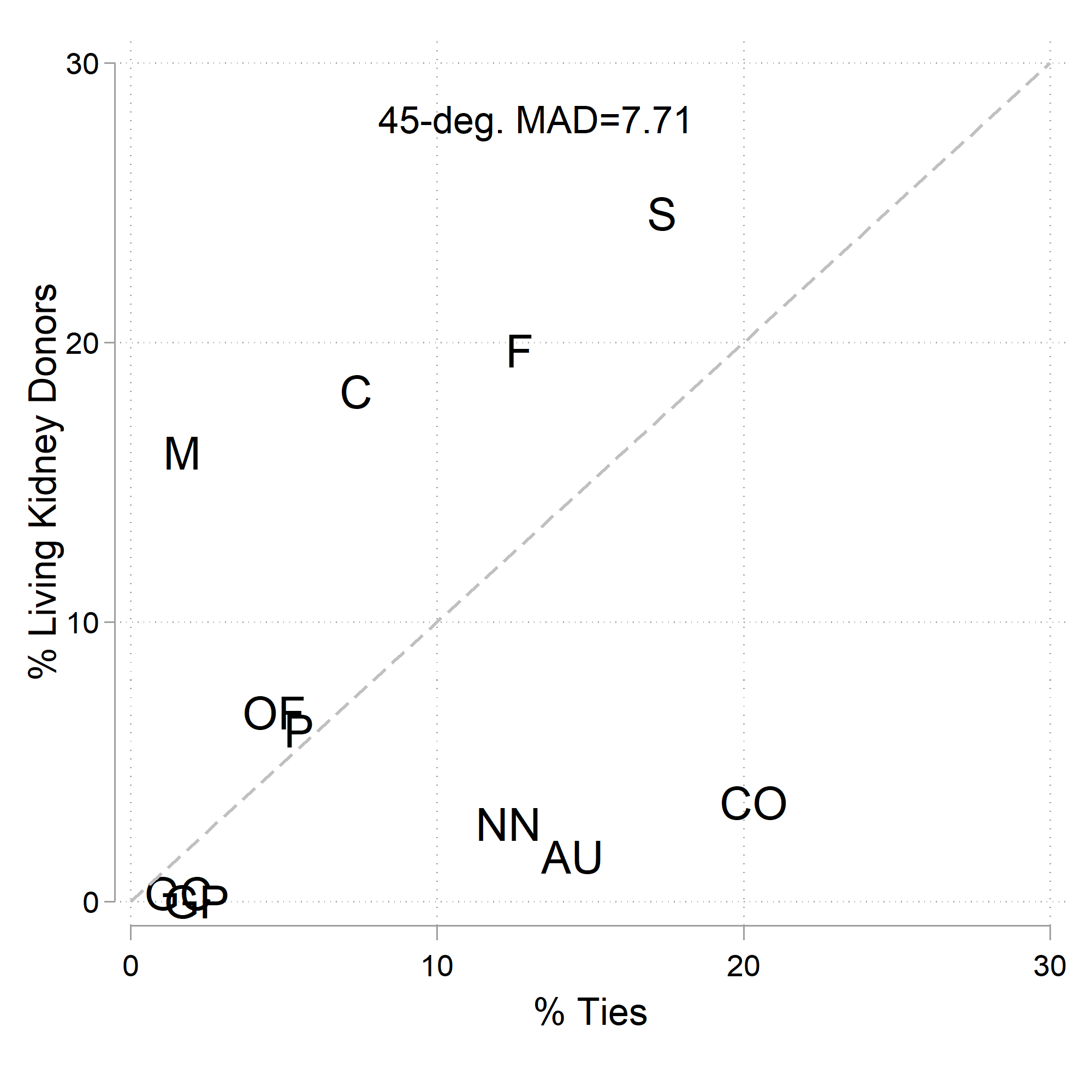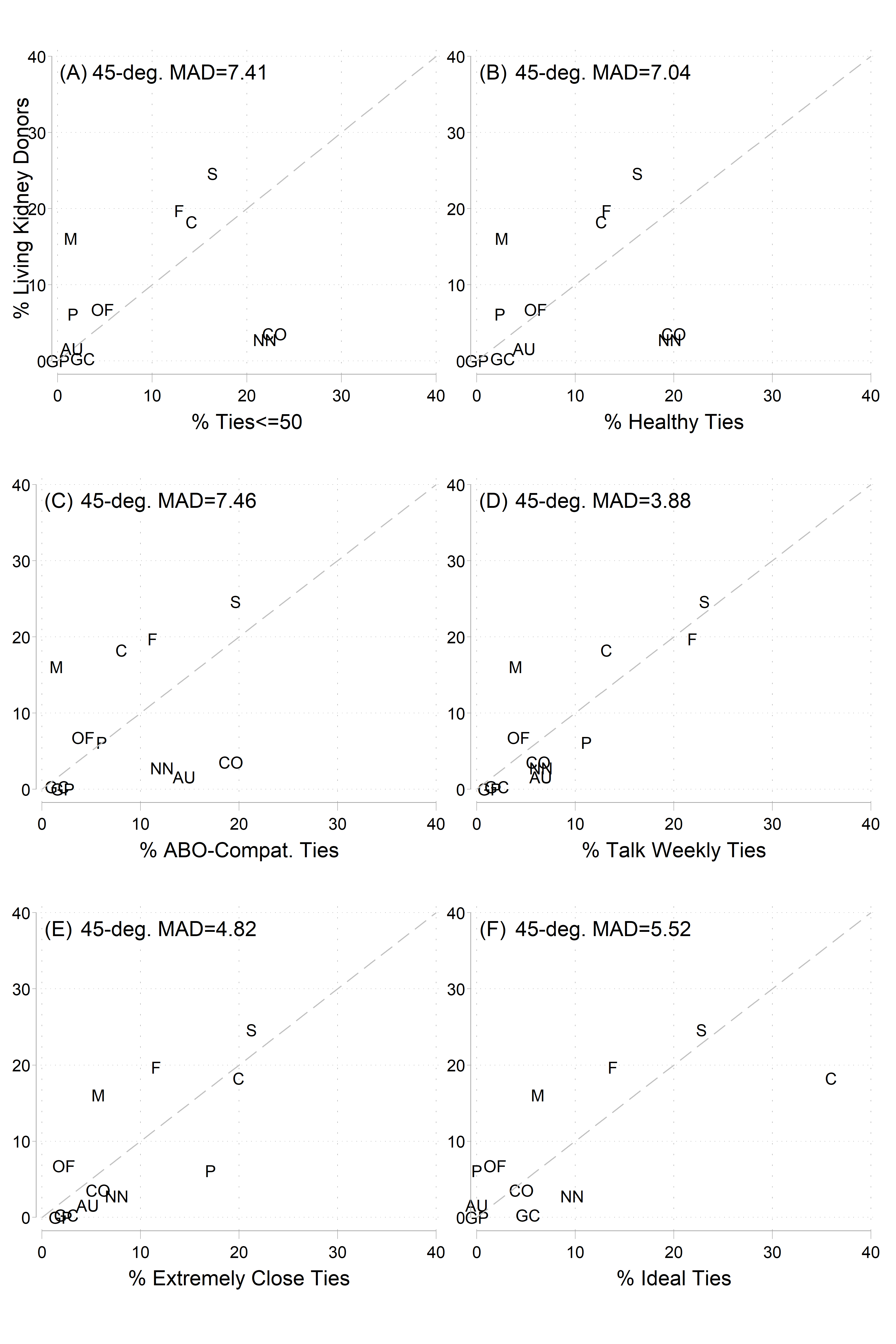The Ties That Transplant: The Social Network Determinants of the Living Kidney Donor Relationship Distribution
J. Daw
Sociology & Criminology, The Pennsylvania State University, University Park, PA
Meeting: 2022 American Transplant Congress
Abstract number: 1370
Keywords: Kidney transplantation, Living donor, Psychosocial
Topic: Clinical Science » Kidney » 33 - Kidney Psychosocial
Session Information
Session Time: 7:00pm-8:00pm
 Presentation Time: 7:00pm-8:00pm
Presentation Time: 7:00pm-8:00pm
Location: Hynes Halls C & D
*Purpose: To describe and explain the distribution of social relationships of living kidney donors to kidney transplant recipients.
*Methods: Using an original dataset of transplant candidates and their reports on their family and friends, this paper compares cross-relationship-group counts of network ties with donation-promoting traits to administrative data on the national distribution of living kidney donor relationships. Donation-promoting traits include network members’ younger age, candidate’s perception that network members are healthy enough to donate, probability of having a compatible blood type with the candidate, weekly communication between candidate and network member, the candidate feeling extremely close to the network member, and all of these traits together (ideal ties). Fit of the relationship distribution of each donation-promoting trait to the living kidney donor relationship distribution is assessed by mean absolute deviation (MAD). The MAD of each model is compared to the fit of a null model comparing each relationship group’s percentage share of living kidney donors to the grand mean percentage, and relative fit is expressed as the percentage by which the null model’s MAD is reduced.
*Results: Compared to the null model, the distribution of network ties (0%), blood type compatibility (3%), young network members (4%), and healthy network members (9%) do not meaningfully improve the MAD. In contrast, the distribution of extremely close ties (37%) and weekly communicating ties (50%) did meaningfully reduce the MAD compared to the null model. These variables’ fit also compares favorably to the MAD based on the distribution of ideal ties.
*Conclusions: The weekly communication and extremely close tie relationship distributions accord in the network survey data accords with the completed living kidney donor relationship distribution in administrative data far better than the relationship distributions of network ties, young network members, healthy network members, close ties, or blood-compatible donor. The relationship distribution of strong social relationships matches the relationship distribution of living kidney donation better than more clinically-relevant characteristics.
To cite this abstract in AMA style:
Daw J. The Ties That Transplant: The Social Network Determinants of the Living Kidney Donor Relationship Distribution [abstract]. Am J Transplant. 2022; 22 (suppl 3). https://atcmeetingabstracts.com/abstract/the-ties-that-transplant-the-social-network-determinants-of-the-living-kidney-donor-relationship-distribution/. Accessed December 27, 2025.« Back to 2022 American Transplant Congress


